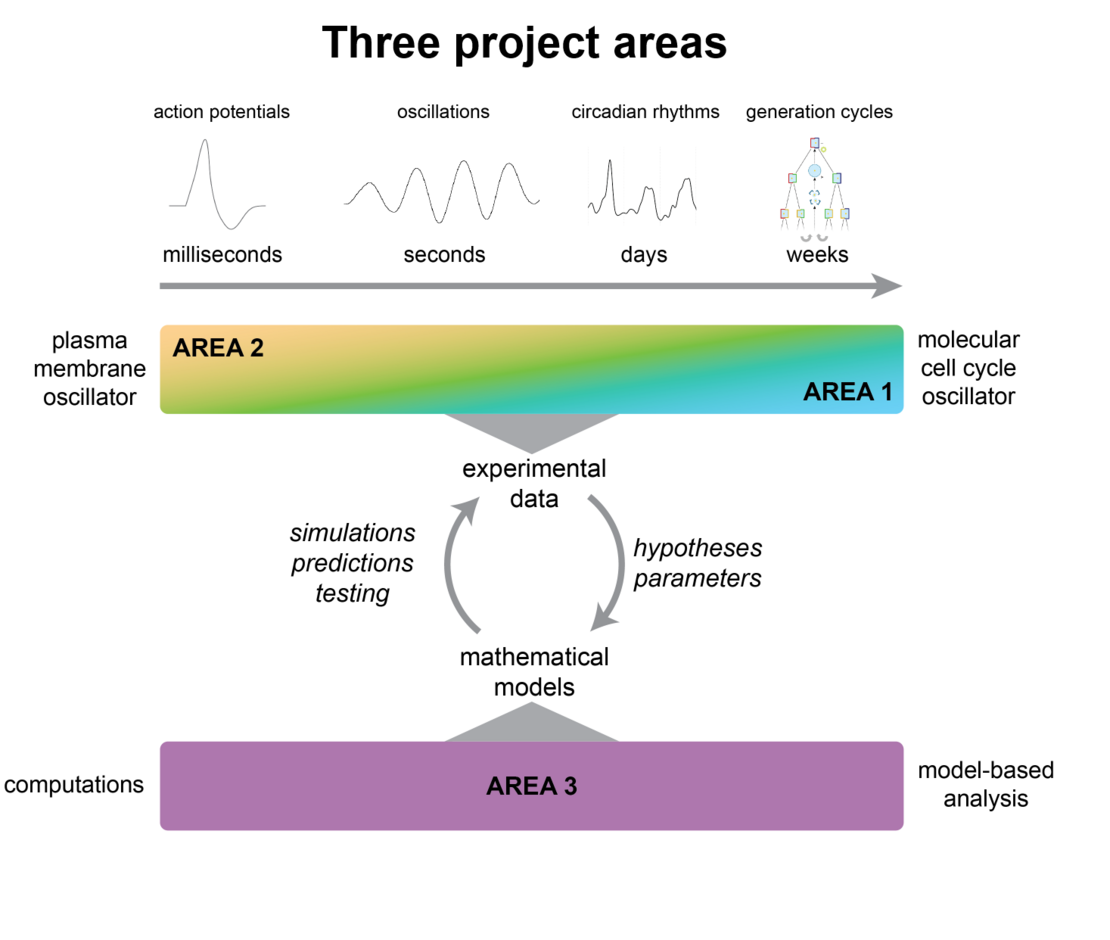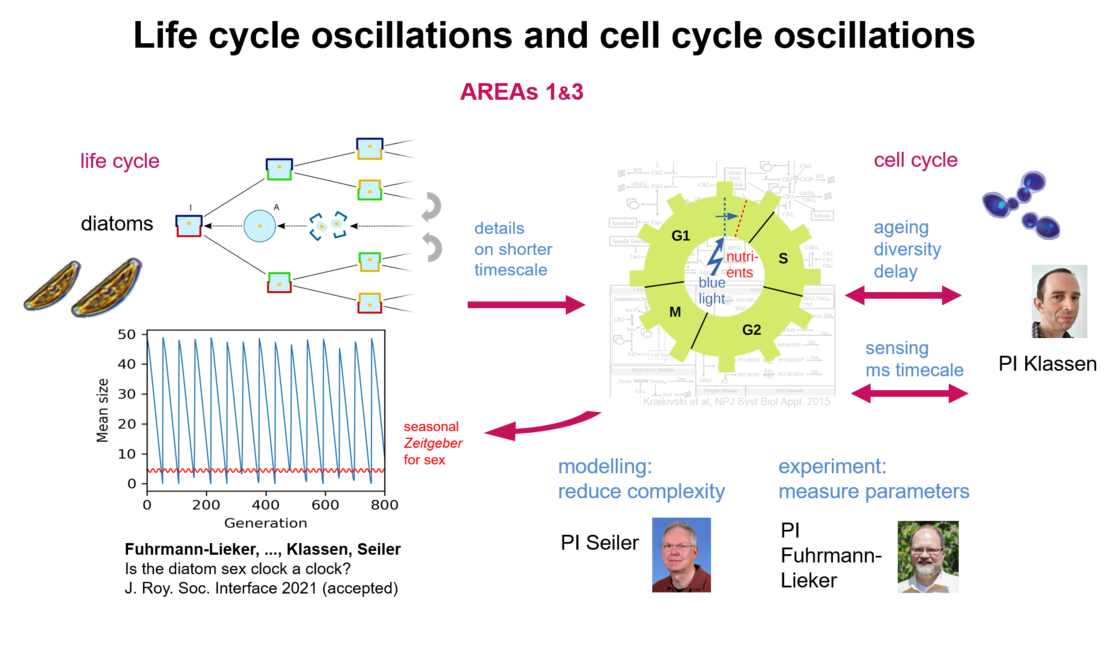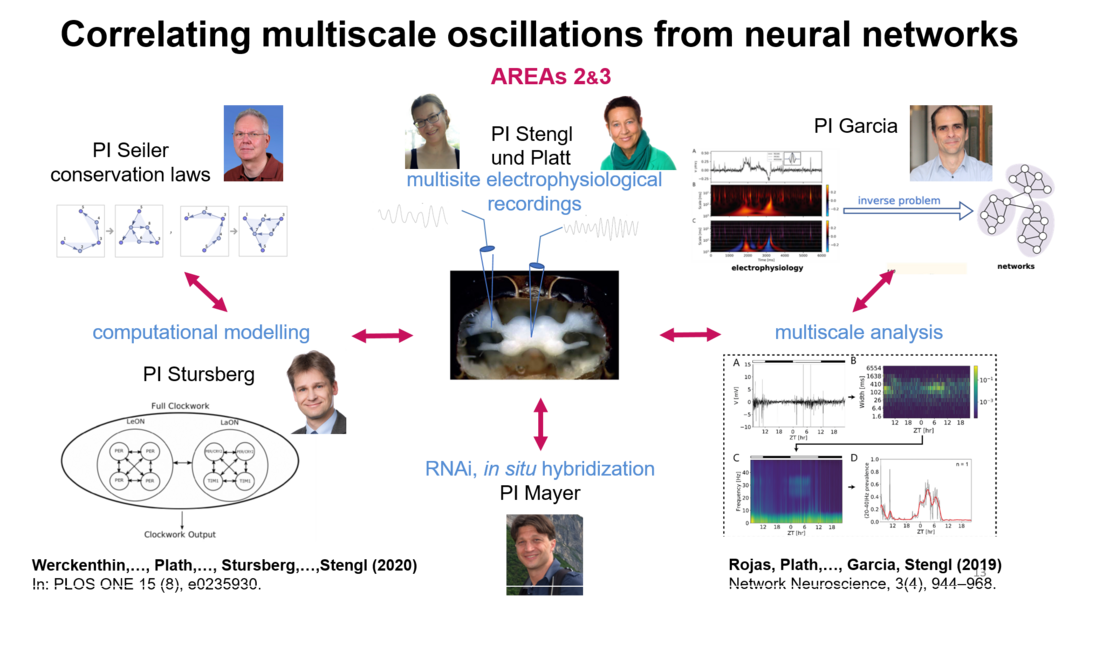Research areas
We focus on two experimental and one theoretical collaborative project areas.
Area 1 includes experimental PIs Fuhrmann-Lieker (Physical and Macromolecular Chemistry), Klassen/Schaffrath (Microbiology), and Müller/Kapp (Developmental Genetics). They employ uni- and multicellular model systems to investigate the coupling of multiscale oscillations connected to cell cycle oscillations.
Area 2 includes experimental PIs Stengl (Neurophysiology/Neuroethology), Popov (Technical Physics), Neupert (Neurochemistry), Mayer (Zoology/Evolutionary Biology), and Herberg (Biochemistry). They center their projects on plasma membrane clocks of peripheral and central circadian clock neurons in arthropods (cockroach, fruitfly, hawkmoth) and one of their closest relatives, the tardigrades (water bears).
Area 3 includes theoretical PIs Friedmann (Mathematics), Garcia (Theoretical Physics), Seiler (Mathematics), and Stursberg (Electrical Engineering/Systems Theory). The theoretical groups work in close cooperation with the experimental scientists to tightly interweave the experimental data with mathematical modeling and theoretical insight. They will develop a unifying modeling framework which encodes the range of dynamic effects from fast (spiking) neuronal activity to slow oscillations and transients on circadian, or even infradian scales.



